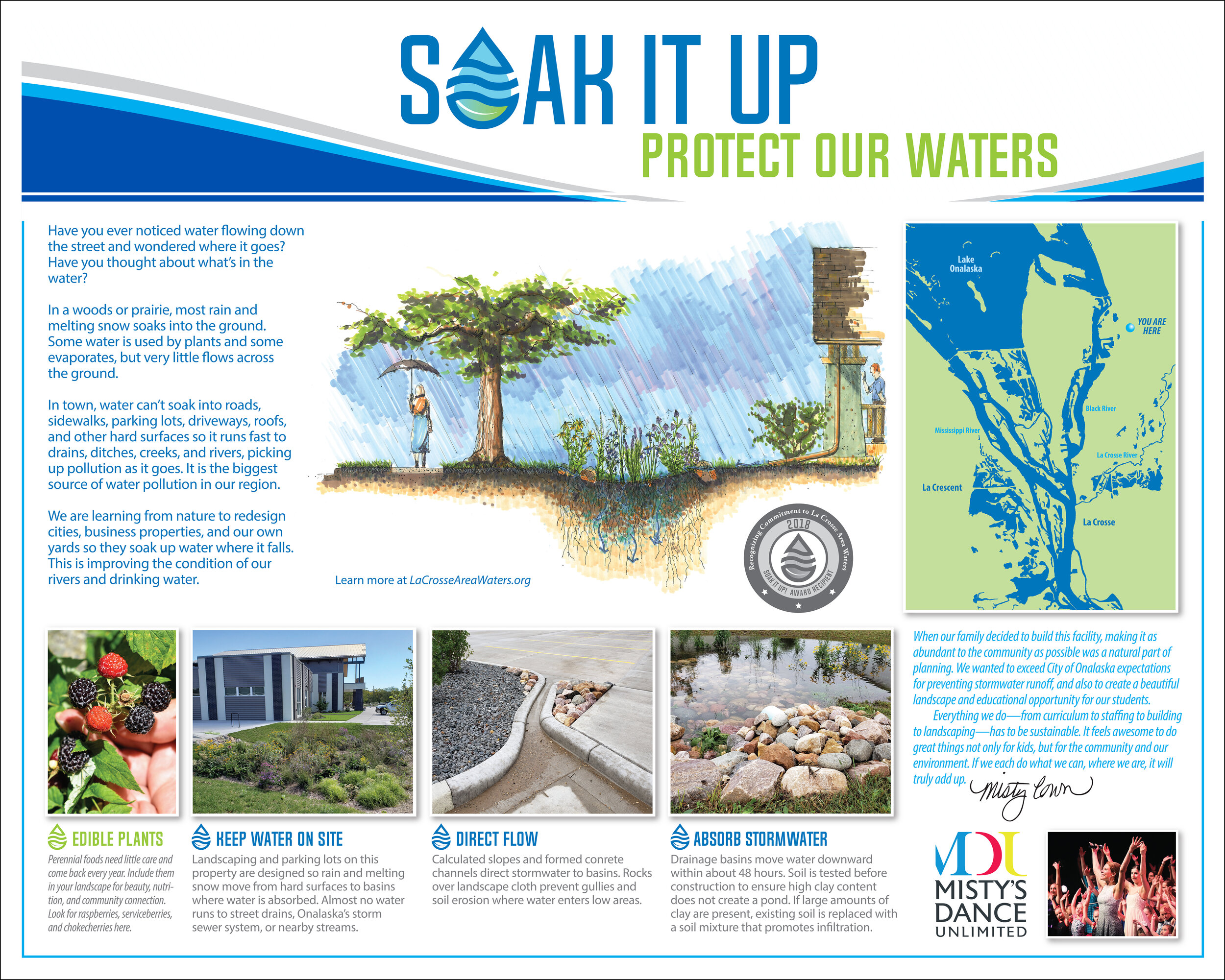

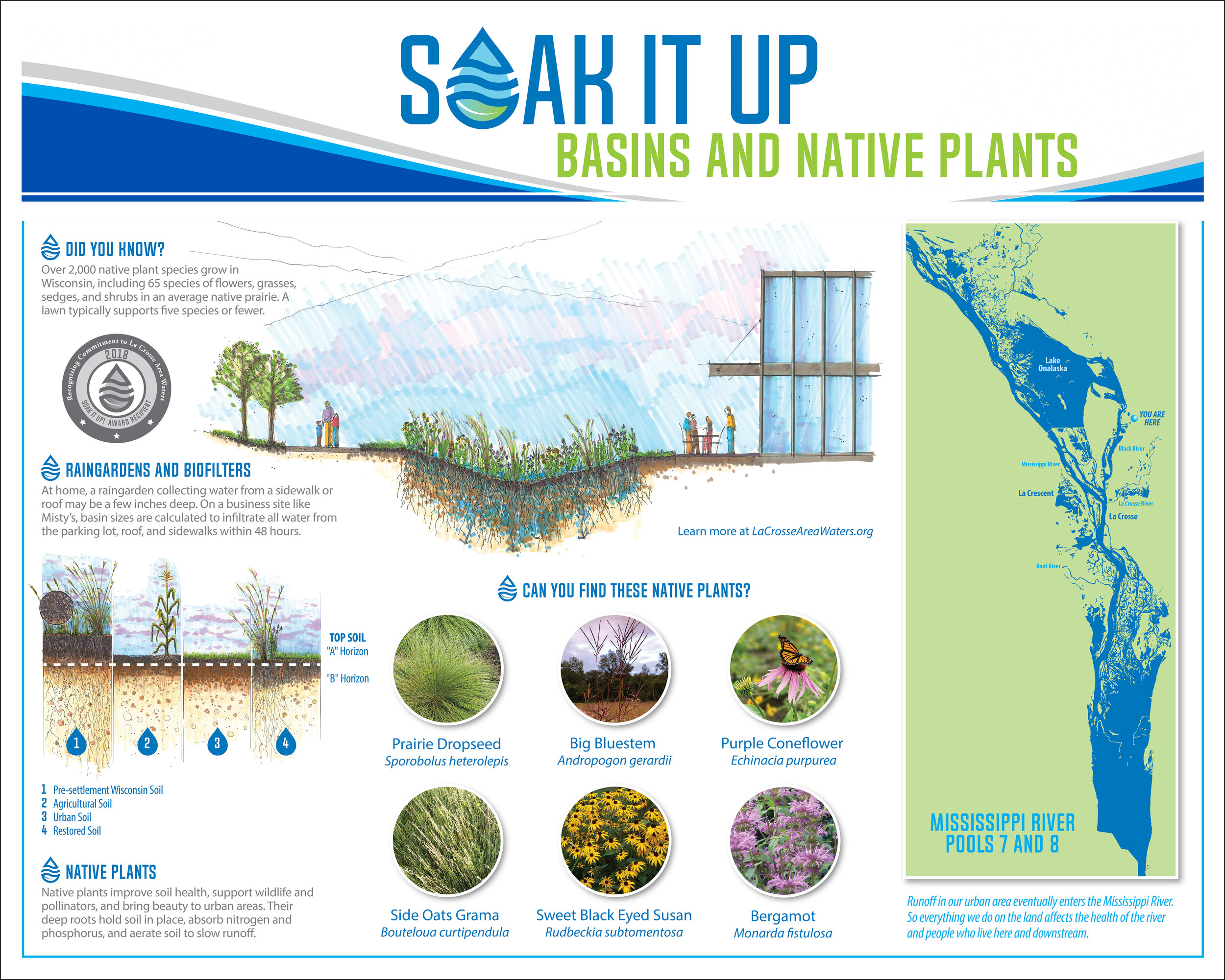
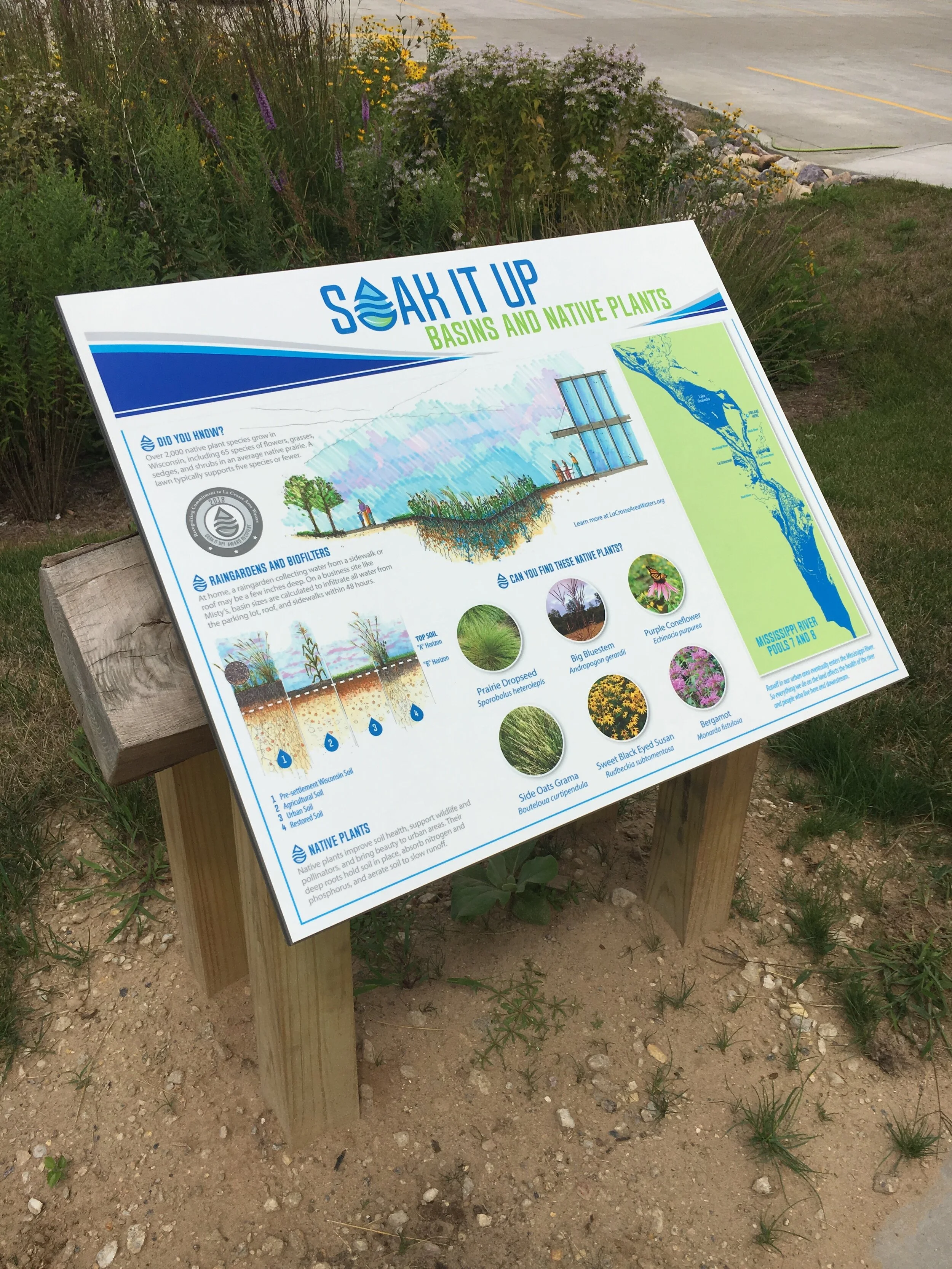
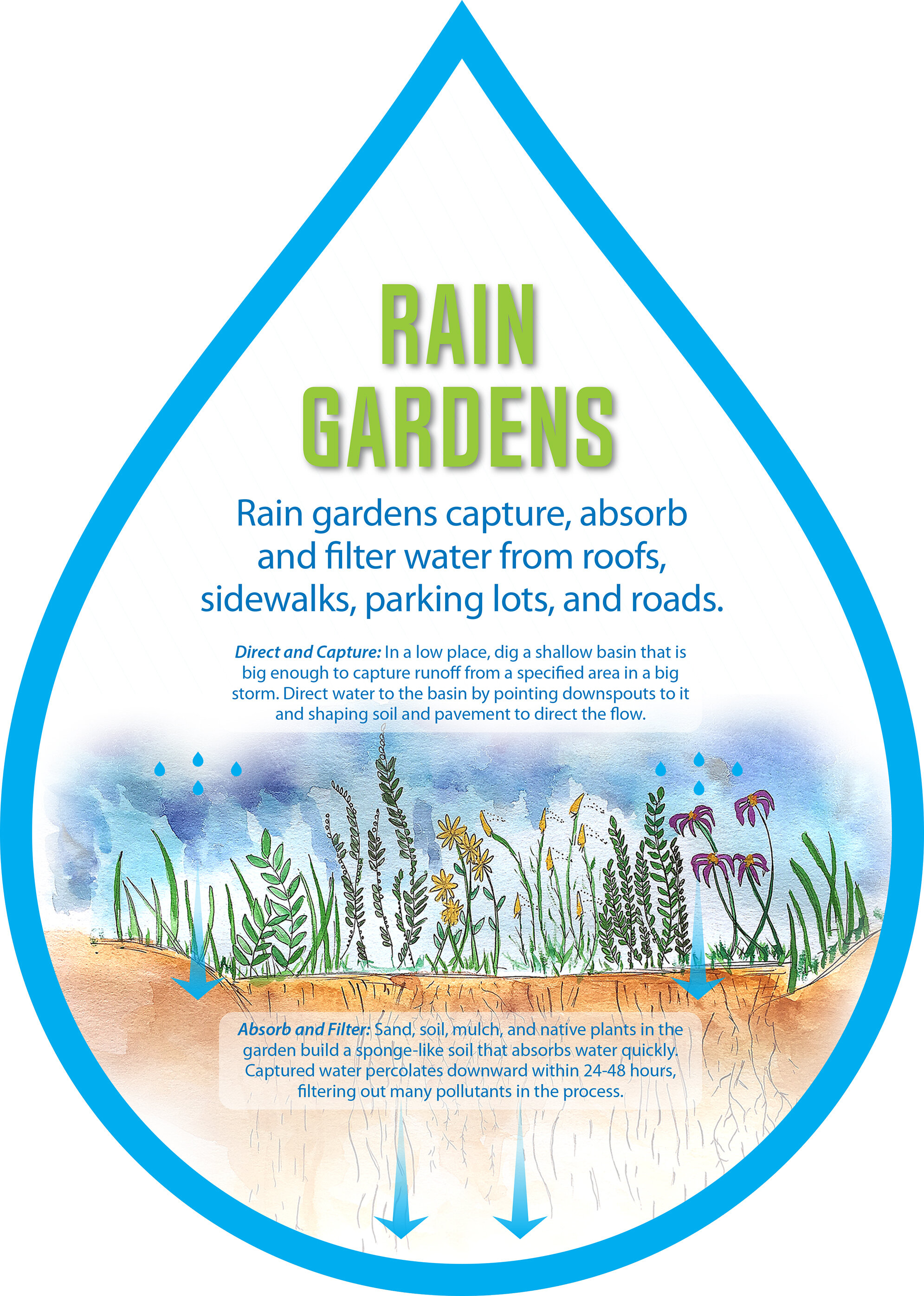
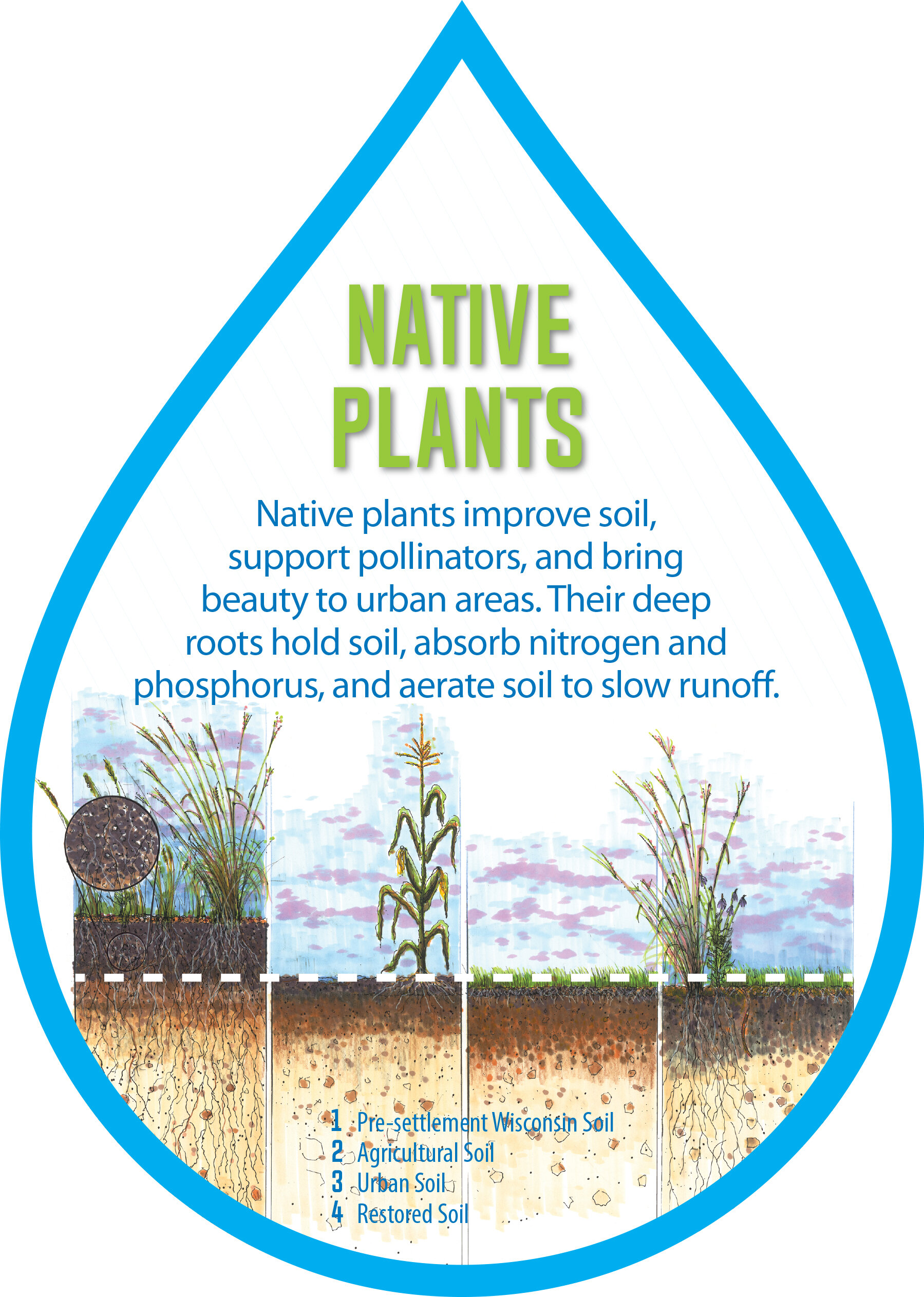
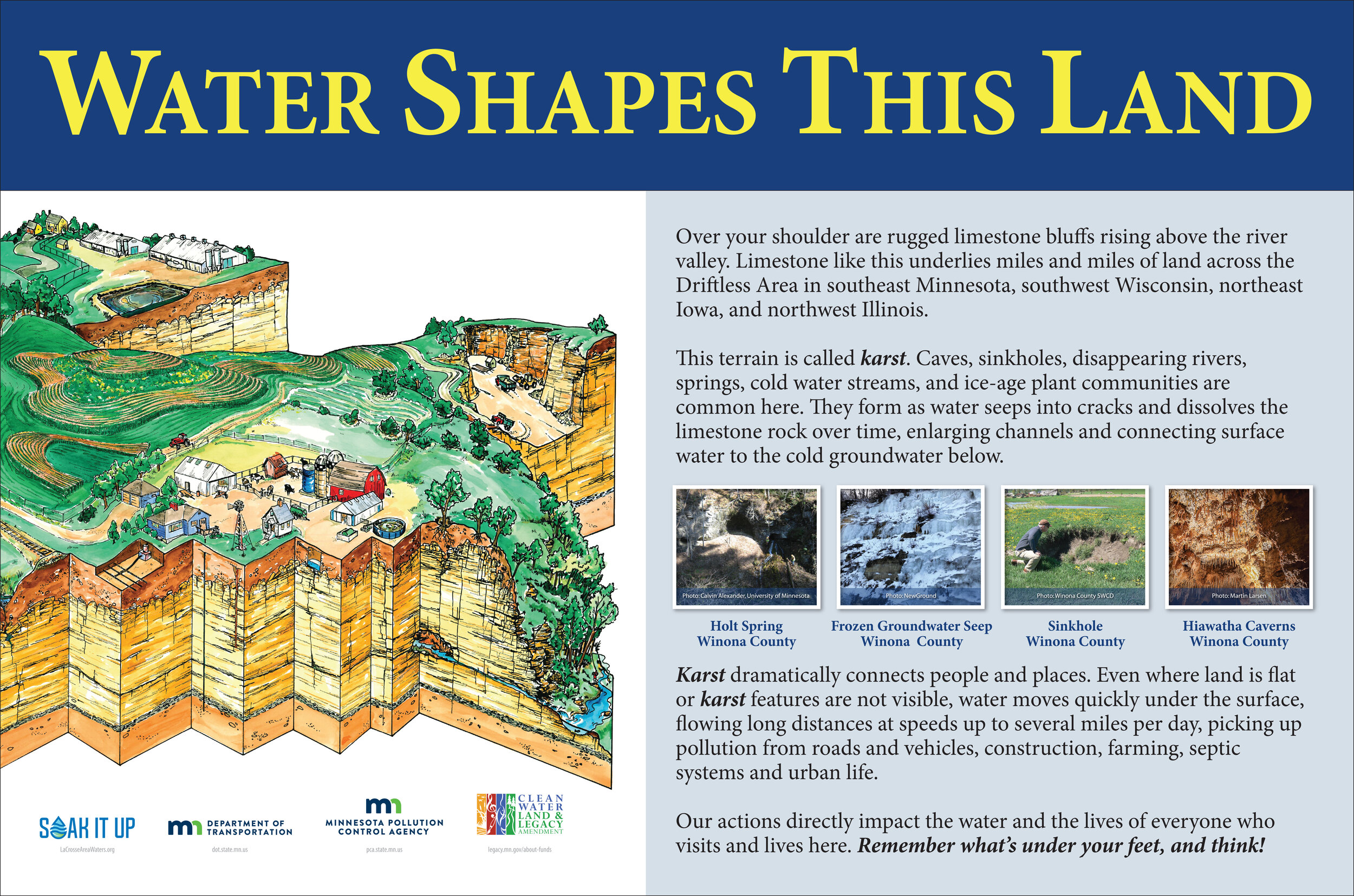
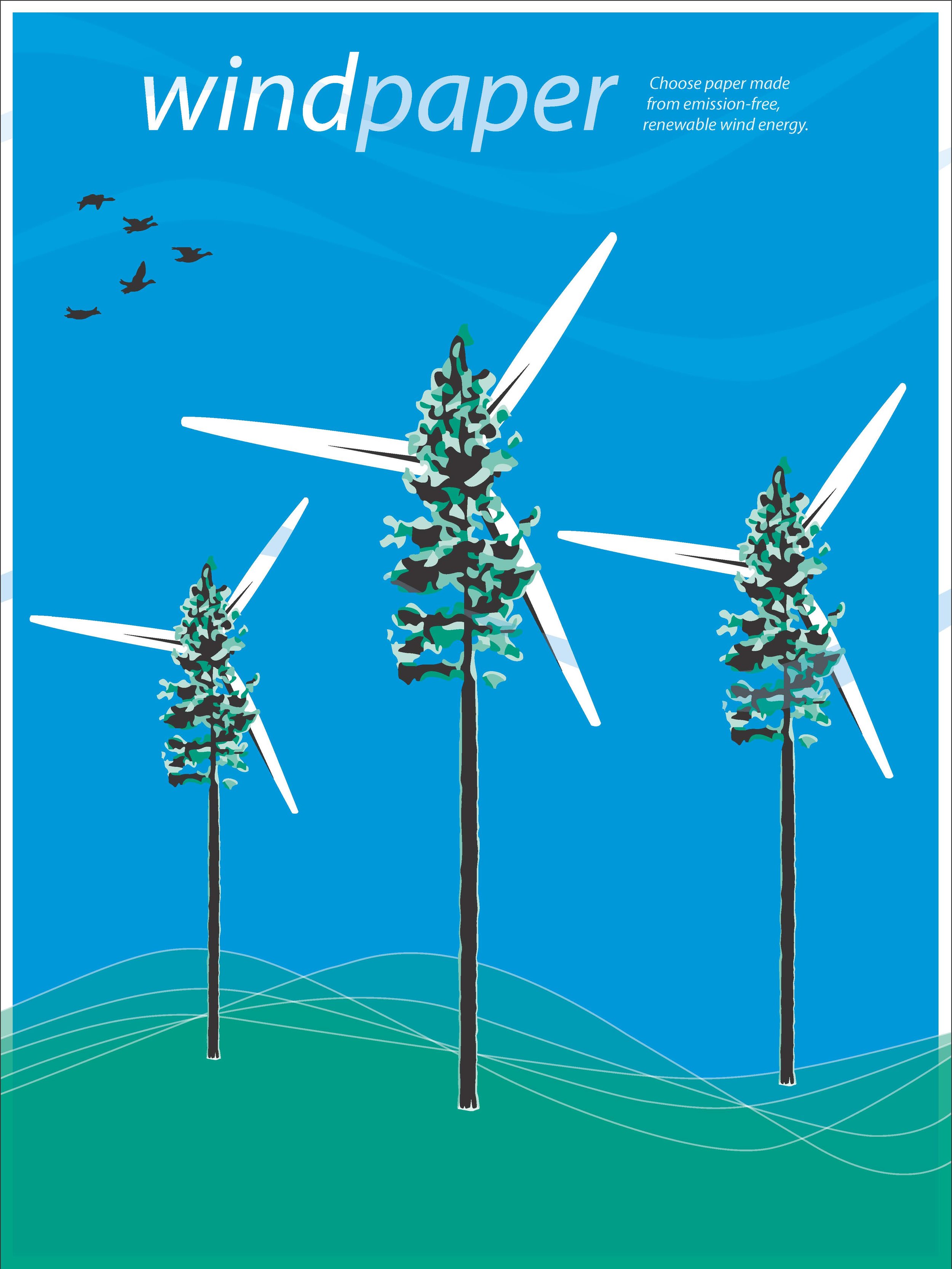
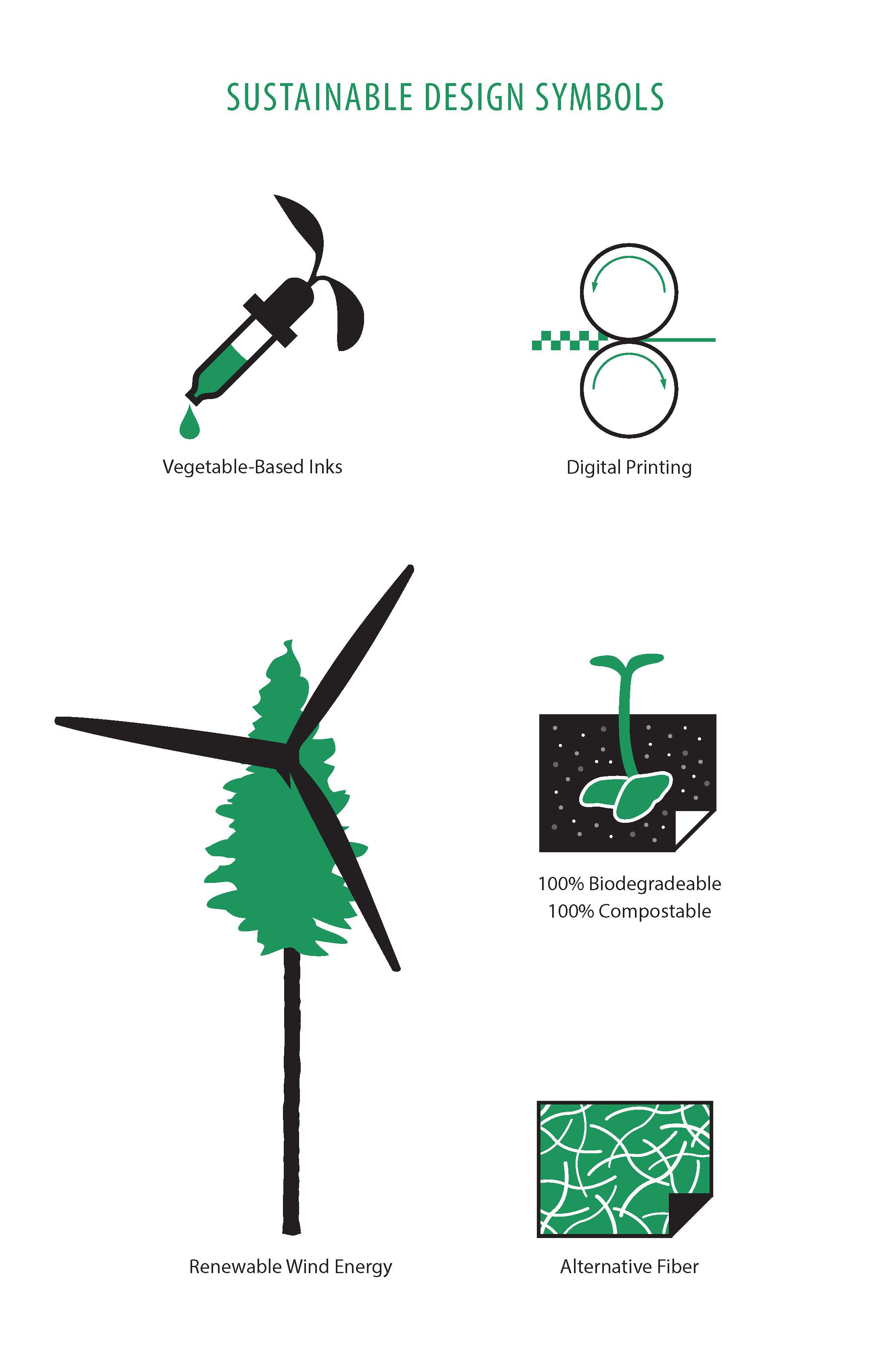
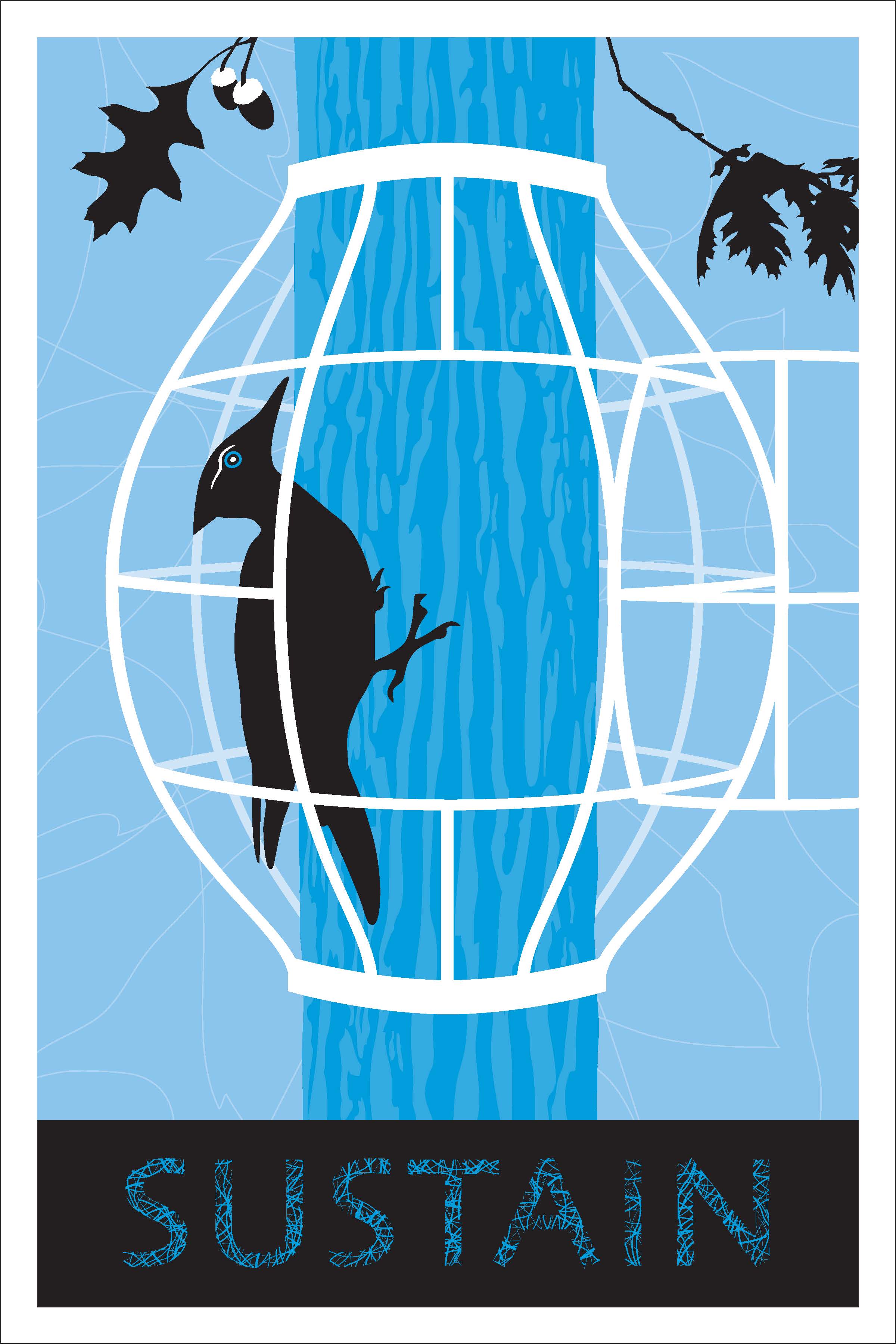
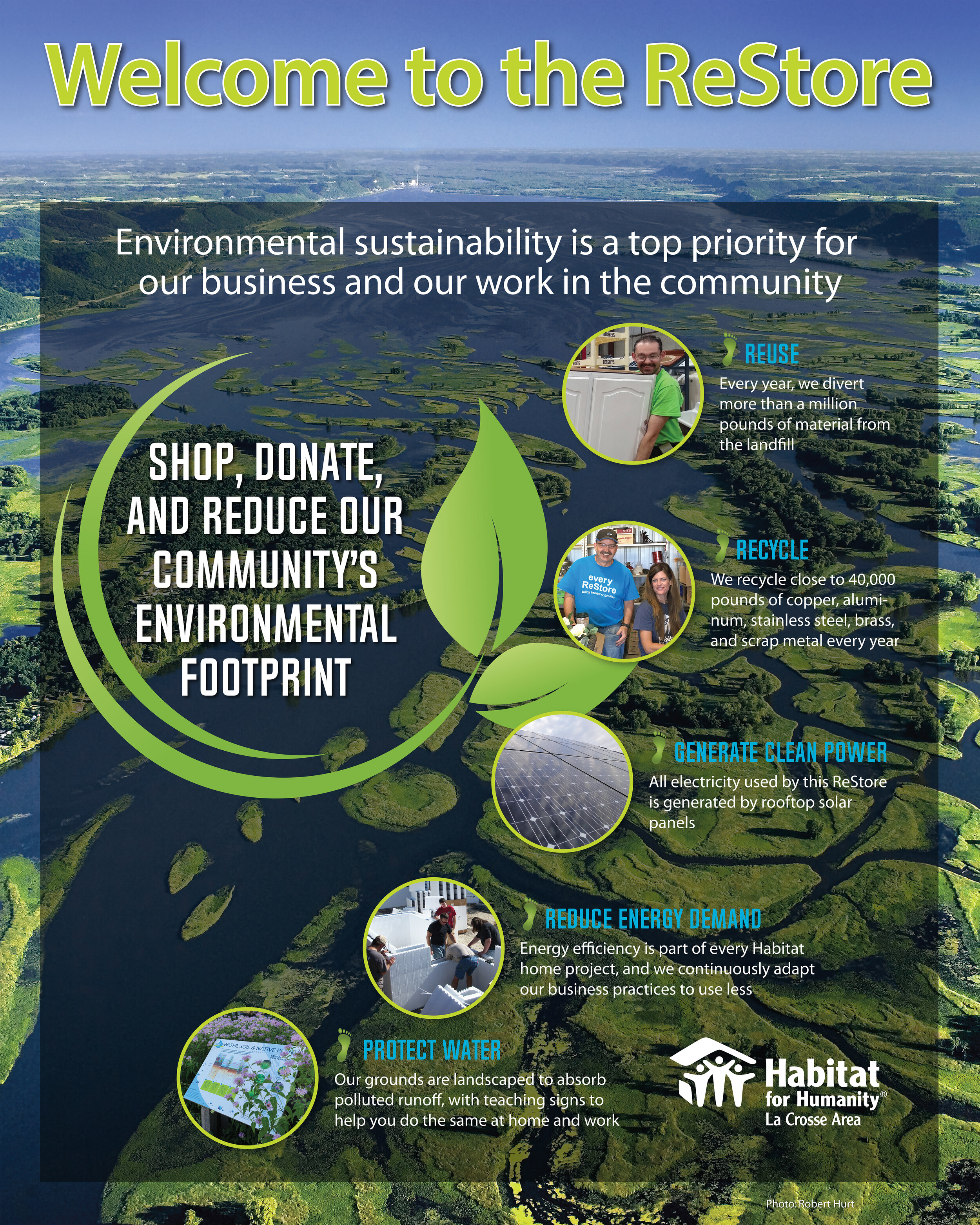
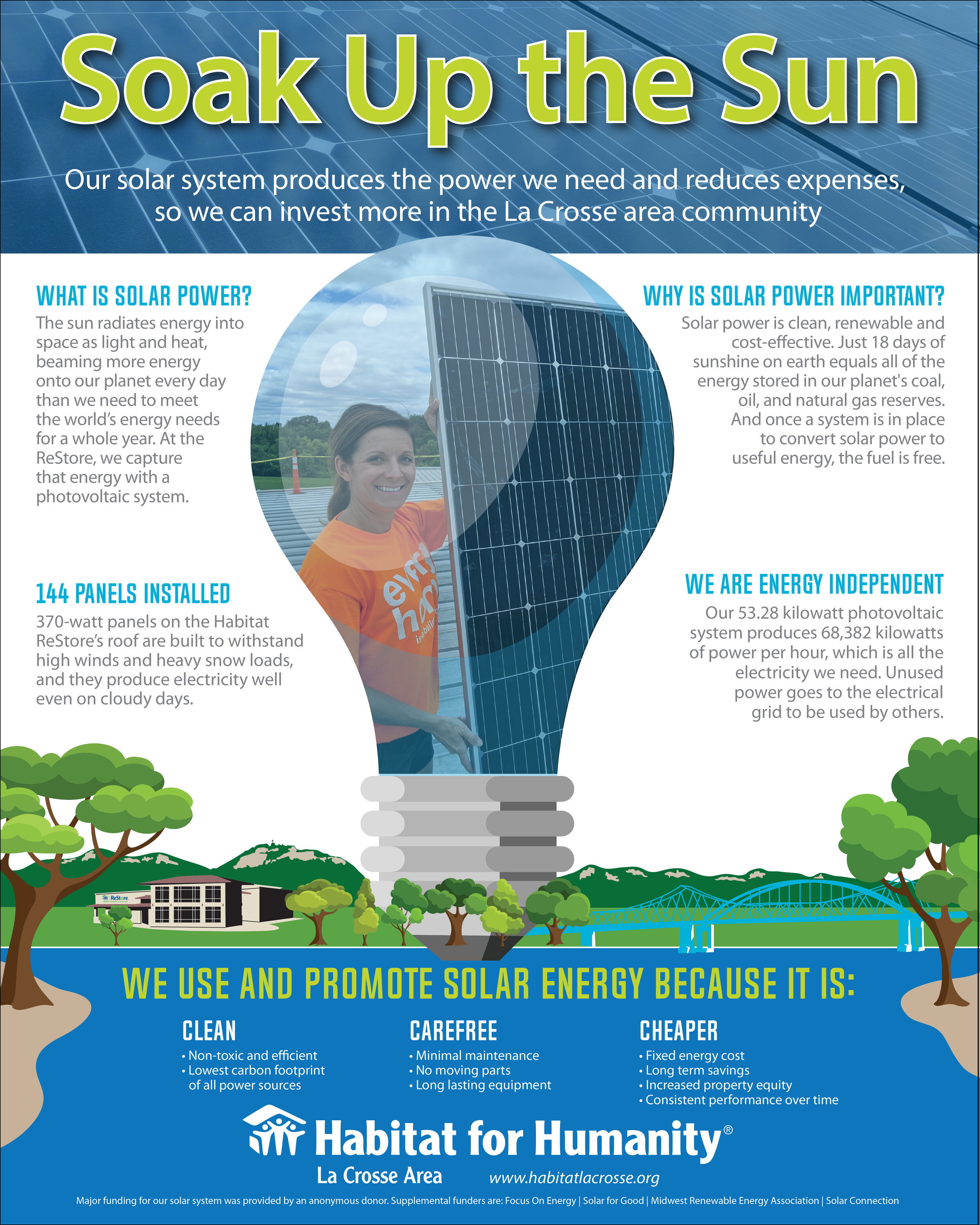

The Soak It Up Project awards homeowners, businesses and nonprofits for developing landscaping projects that reduce the negative effects of stormwater runoff. This is a practical way for citizens to be part of the solution—to keep polluted water out of our rivers, protect drinking water and beautify neighborhoods.
Interpretive signs educate the public about the processes regarding sustainable stormwater practice.
30” x 24”

The Soak It Up Project awards homeowners, businesses and nonprofits for developing landscaping projects that reduce the negative effects of stormwater runoff. This is a practical way for citizens to be part of the solution—to keep polluted water out of our rivers, protect drinking water and beautify neighborhoods.
Interpretive signs educate the public about the processes regarding sustainable stormwater practice.
30” x 24”

The Soak It Up Project awards homeowners, businesses and nonprofits for developing landscaping projects that reduce the negative effects of stormwater runoff. This is a practical way for citizens to be part of the solution—to keep polluted water out of our rivers, protect drinking water and beautify neighborhoods.
Interpretive signs educate the public about the processes regarding sustainable stormwater practice.
10” x 14”

The Soak It Up Project awards homeowners, businesses and nonprofits for developing landscaping projects that reduce the negative effects of stormwater runoff. This is a practical way for citizens to be part of the solution—to keep polluted water out of our rivers, protect drinking water and beautify neighborhoods.
Interpretive signs educate the public about the processes regarding sustainable stormwater practice.
6” x 8.5”

This interpretive sign is displayed at the Minnesota Visitor’s Center in Dresbach. It is designed to complement three other signs that were previously installed to assure a cohesive look.
This sign educates the public about the water that flows through the limestone bluffs that border the Mississippi River. Its karst terrain connects surface water to the groundwater through underground channels that form as the limestone is dissolved by the water. Subsequently, it picks up pollutants along the surface and thereby negatively impacts the quality of the water that eventually flows into the rivers and streams.
35.5” x 23.5”

The unusual juxtaposition of a tree with a wind turbine is intended to convey the idea of how paper produced with emission free, renewable wind energy can greatly reduce the environmental impact of paper manufacturing and consumption.
18" x 24"

A visual system includes a set of symbols to assist consumers in identifying sustainable practices used in the production of various printed artifacts including paper, ink and printing devices.

The metaphor of the birdcage as a symbol of human dominion over nature is dramatically recontextualized. Rather than confining the bird, the cage is protecting the tree (from deforestation). The imagery expresses the environment’s need for thoughtful stewardship of the land.
11" x 17"

Environmental sustainability is a top priority at Habitat for Humanity. This welcome sign informs consumers of the various sustainability initiatives that the organization engages in to reduce their environmental footprint in the community.
48” x 60”

Habitat for Humanity installed 144 solar panels onto the ReStore rooftop which produces the energy they need to power their location while reducing their expenses.
This interpretive sign educates the public about the benefits of clean, renewable, solar energy and how ReStore captures the sun’s energy with a photovoltaic system
24” x 30”